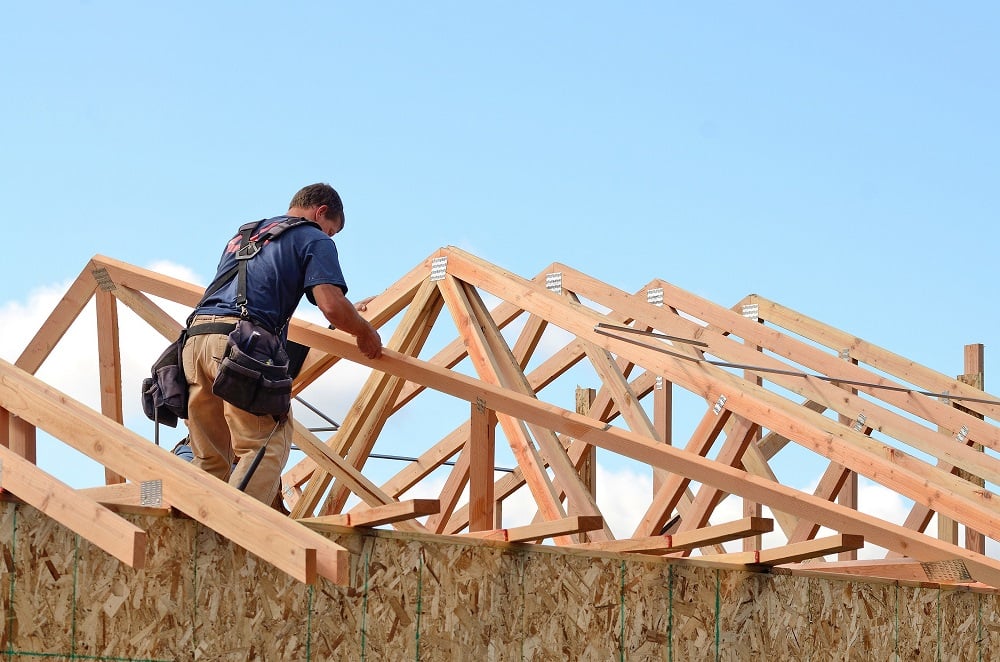Learning the Principles of Roof Truss Design
Trusses are used on the roofs of most modern houses to give stability and strength to the underlying framing structure. There are different components with unique functions and designs you can use to create a studier roof for your house. Here are the principles of roof truss design.
What Is a Truss?
A truss, more commonly known as a rafter, is a device used to support different loads of the underlying frame of a roof. This is achieved by creating a structure made of triangles that interconnect, thus transferring the weight of the roof to load-bearing walls of the house. Trusses can span long distances and don’t need support from interior wall partitions.
How Are Trusses Attached?
These devices are attached to the walls via toenails (nails driven in at angles), clips that connect to one side of your roof with three nails, or straps that are wrapped over the truss with two nails. In recent years, however, truss installation companies have been using a third nail system, which is much stronger. A licensed  third nail inspector in Florida, and elsewhere, can determine if your roof needs this attachment method. The main determining factor is weather. If you live in states where hurricanes are likely to occur, such as Florida, driving winds speeds to hundreds of miles per hour, then you should probably invest in third nail services for your roof.
third nail inspector in Florida, and elsewhere, can determine if your roof needs this attachment method. The main determining factor is weather. If you live in states where hurricanes are likely to occur, such as Florida, driving winds speeds to hundreds of miles per hour, then you should probably invest in third nail services for your roof.
 third nail inspector in Florida, and elsewhere, can determine if your roof needs this attachment method. The main determining factor is weather. If you live in states where hurricanes are likely to occur, such as Florida, driving winds speeds to hundreds of miles per hour, then you should probably invest in third nail services for your roof.
third nail inspector in Florida, and elsewhere, can determine if your roof needs this attachment method. The main determining factor is weather. If you live in states where hurricanes are likely to occur, such as Florida, driving winds speeds to hundreds of miles per hour, then you should probably invest in third nail services for your roof.Third nail inspections can be tough because inspectors might need to remove decking—usually built with plywood—to get to the areas of your roof requiring third nail installation. Fortunately, there are two easier ways to get to these areas: through your home’s crawl space or the soffit, which is the exposed surface under the eaves of the roof. In the long run, adding a third nail system to your roof’s trusses will save you time and money used to fixed continual damage to your roof.
Geometry of Trusses
Trusses are typically lightweight to take advantage of the geometry and laws of statics required to create a stable rooftop. When you connect three flat objects together with bolts, you create a triangular structure that stays rigid, even if the bolts are loose. If you do this with four objects, creating a square, you will have a hard time keeping structure from turning into a thrombus, no matter how much you tighten the bolts. To keep the square structure rigid like the triangular one, you need to add a diagonal brace. This is how a truss works on your roof. You start with one triangle, then make more triangles using trusses. This is the geometry of trusses.

Law of Statics of Trusses
Trusses are, ideally, a set of straight components that are connected at the ends with force applied to the joints. This results in the trusses being loaded only at the ends. Some loads come from externally forces, while others come from connected components. The law of statics shows that trusses, when loaded along two points, will result in axial forces (forces acting along the axis) that are equal in size and face opposite directions. If trusses are loaded by downward forces, the components at the top are in tension. Components connecting top and bottom chords can be in tension or compression, depending on the angles the loads are distributed. These principles are what makes roof trusses so structurally sound.
LGT Restoration Services, Inc., has more information about the principles of roof truss design. Visit our website at  http://www.thirdnail.net, email us at thirdnailguy@gmail.com, or call us at
http://www.thirdnail.net, email us at thirdnailguy@gmail.com, or call us at  1-844-990-9797.
1-844-990-9797.
 http://www.thirdnail.net, email us at thirdnailguy@gmail.com, or call us at
http://www.thirdnail.net, email us at thirdnailguy@gmail.com, or call us at  1-844-990-9797.
1-844-990-9797.
